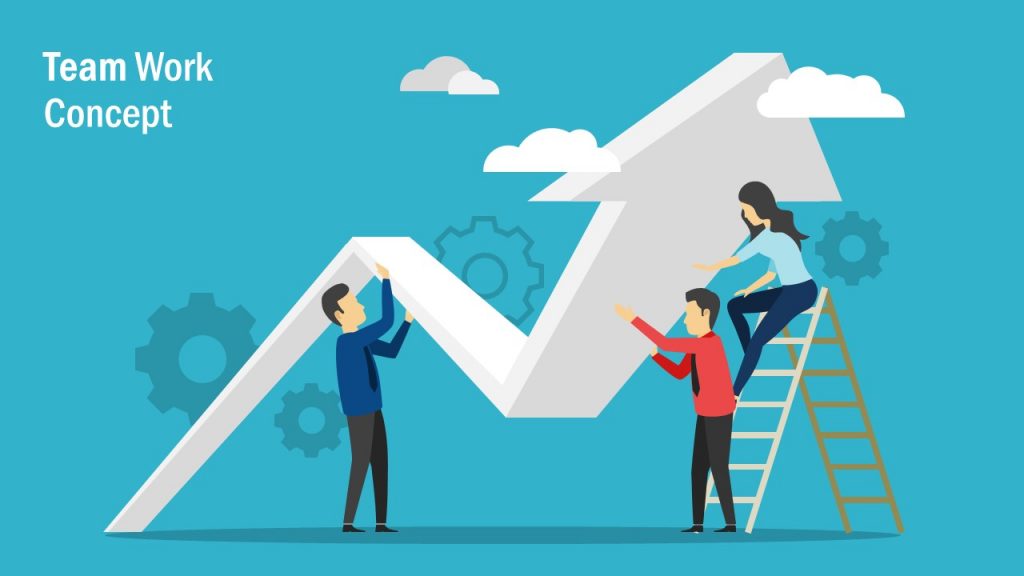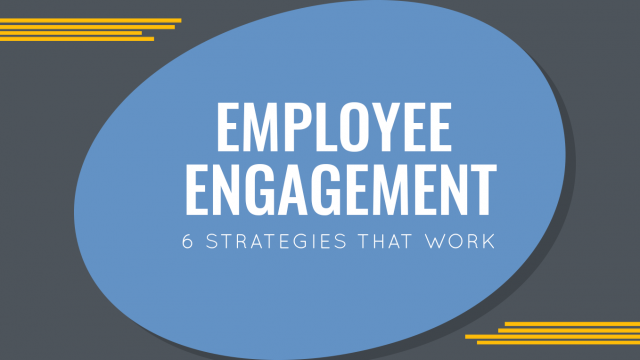
Let’s cut the chase: teamwork is challenging. Encouraging people to communicate better. Getting a team to consistent performance levels. Resolving conflicts.
Everyone who tells you otherwise would be wrong. But the above challenges shouldn’t discourage you from striving to build a high-performing team. While this quick guide won’t provide you with a “silver bullet solution”, it will leave you with a strong base of research-based knowledge you can use to improve your team management skills.
So What is Teamwork?
The International Encyclopedia of the Social & Behavioral Sciences gives the following teamwork definition:
Teamwork is the ability of team members to work together, communicate effectively, anticipate and meet each other’s demands, and inspire confidence, resulting in a coordinated collective action.
The ability to “join forces” to accomplish shared goals has proved crucial since the dawn of humankind. Hunting, gathering, and farming required ancient people to learn to cooperate in order to succeed. Without teamwork skills, we would have never realized such ambitious projects as building railroads, developing the Internet, or soon — sending the first tourists to space.
But let’s reevaluate from aspirations to reality: what are the actual mechanics of effective teamwork?
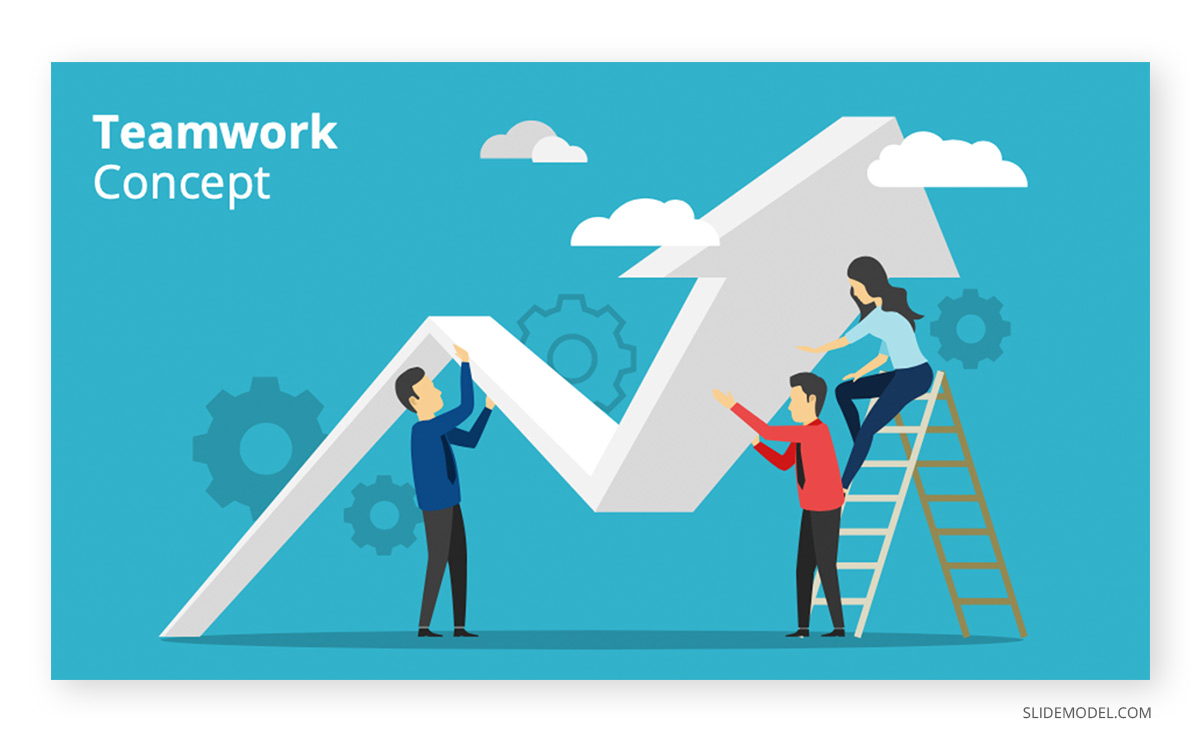
The Four Defining Characteristics of Teamwork
Social scientists determined that the following four characteristics of teamwork drive most team successes:
Performance monitoring: When working in groups, we tend to analyze how others are handling their chores. This type of natural observation promotes better group accountability. No one wants to appear as a “lagger” among team members. Thus we try to adjust or pace and quality of work to the stands set by others. Because of such “cohesion”, the team as a unit functions smoother.
Feedback: When working in teams, we don’t just watch others — we also provide feedback on how well they are coping with the job. Such a rapport on the effectiveness or ineffectiveness of performance helps homogenize the team’s performance. And respectively — drive efficiency. However, for this to happen, team members must feel comfortable providing and accepting feedback to everyone else, despite the rank of tenure. Free-flowing feedback is the defining characteristic of high-performing teams.
Closed-loop communication: Good communication is vital for effective teamwork. That’s a known fact. What’s more curious is that there’s a specific type of rapport that most teams assume. It’s called “closed-loop communication”.
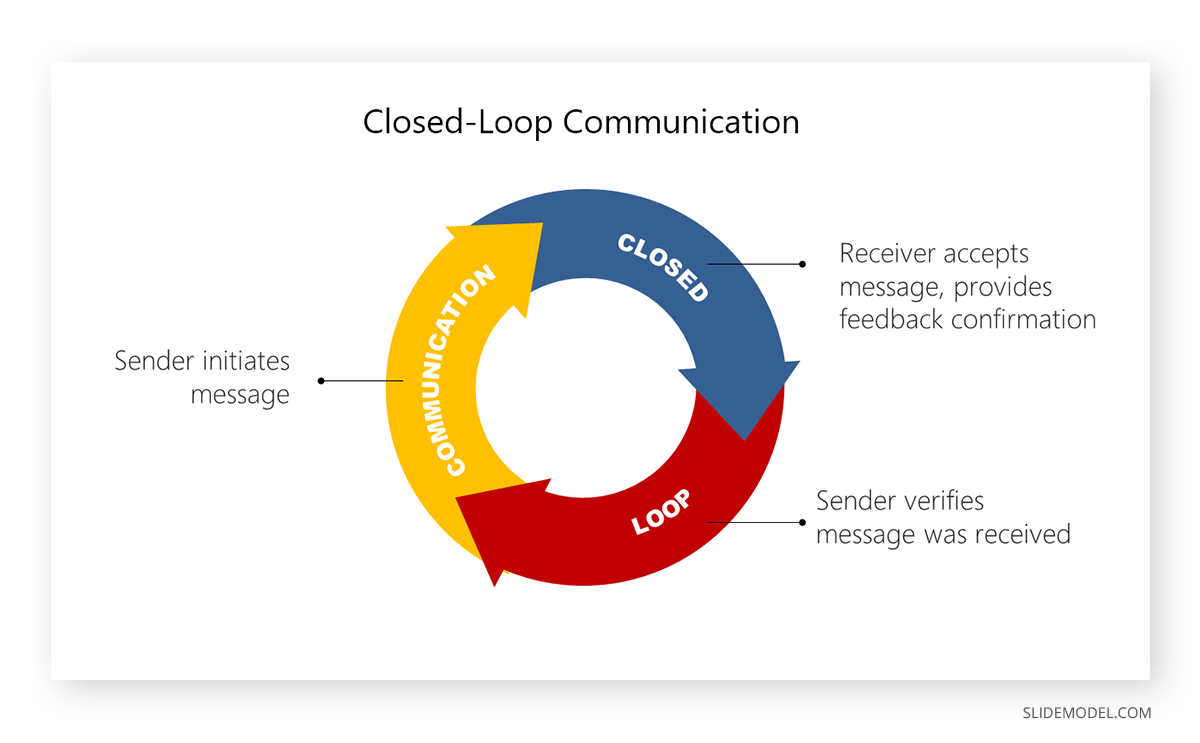
That’s a simple communication style most of us engage in without knowing. A closed-loop conversation goes like this:
- Sara, I need you to create a new go-to-market presentation with 15 slides by Monday.
- Got it, Tim. I will send you over a 15-slide deck by Monday.
- Yes, thanks.
Such a repetition serves several purposes. First, it provides the “sender” with an acknowledgment that their message landed. The “receiver”, in turn, better remembers the message contents, plus verify its correctness with the sender yet again.
Closed-loop communication helps prevent misunderstanding and ensures more smooth information flows between all team participants.
Back-up behaviors: “I’ve got your back!” is the sentiment you experience working in a well-managed team. It arises from the fact that other members are willing to step in when needed and support you. This happens when all team members know how and when to ask for help (without the fear of being judged).
Why is Teamwork Important?
As popular lore says: “teamwork makes the dream work”. That idea holds true at the workplace too! Over 54% of employees admit that a strong sense of community (common vision and mission, great coworkers, and corporate culture) prompt them to stay longer with the employer.
Gallup also found that employee engagement strongly correlates with the overall levels of teamwork in the workplace. Well-oiled teams tend to be 17% more productive, experience 24% lower turnover, and 41% lower absenteeism.
On a broader level, without effective teamwork, organizations struggle to move forward with new initiatives and frequently — fail to complete them. Team performance directly affects project timelines and success rates, plus the overall business bottom line.
On the other hand, well-managed and diverse teams drive better financial outcomes for organizations. McKinsey found teams made up of members from diverse backgrounds (regarding gender, age, ethnicity, etc.) are more creative and perform better by up to 35% better, than homogeneous teams.
To sum up the benefits of teamwork boil down to:
- Improved productivity and operational effectiveness
- Higher employee engagement
- Better financial outcomes for the businesses
- More creative ideas and solutions to trivial issues
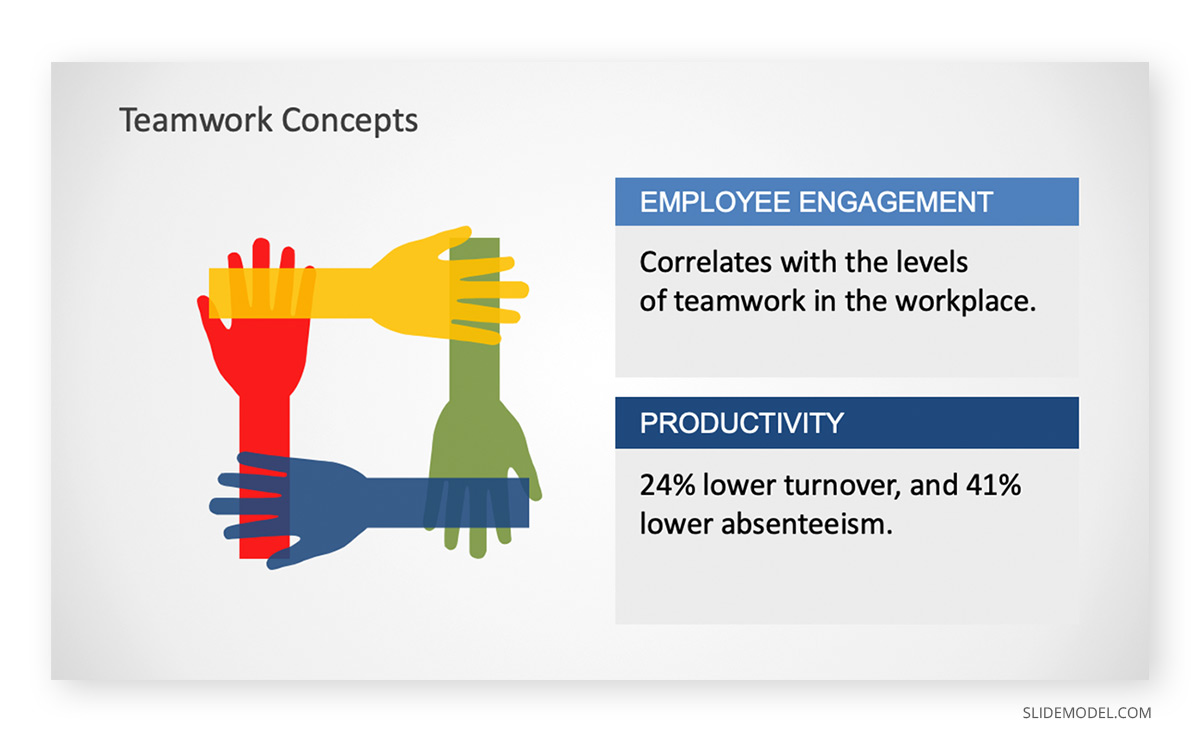
Characteristics of a Successful Team
OK, so the importance of teamwork is pretty clear. But how can leaders nurture high-performing teams?
Researchers from the University of Perth found that to succeed with team building, it’s necessary to foster the following characteristics among team members:
- Commitment to team success and shared goals — securing a “buy-in” from a team is key to ensuring their ongoing dedication to the task at hand.
- Interdependence — team members support and encourage their peers to achieve, contribute, and learn while doing the same themselves.
- Interpersonal skills — people on the team can candidly communicate with one another, remain mindful of other people’s needs, and exhibit high emotional intelligence levels.
- Open communication and positive feedback — everyone on the team should be ready to receive and give constructive criticism and feedback.
- Appropriate team composition — every person should understand their role and scope of responsibilities and expectations for them. They should also know how their contributions affect other team members and the entire project.
- Commitment to team processes, leadership & accountability — team members must know the standard operating process and “best practices” that everyone else is using. At the same time, team leaders must also step in whenever their input is needed for shared decision-making and problem-solving.

How to Improve Teamwork: 4 Research-Based Strategies
Many managers believe that team members’ individual attributes such as age, seniority level, or reputation are the most determinant to successful team management.
It’s the opposite. APA found that “deep level factors” such as the person’s values, personality traits, or soft skills can have more far-rearing consequences on teamwork effectiveness.
How do you leverage those deep-level factors to build better teams? Here are four strategies.
Create an Atmosphere of Safety and Openness
Atlassian, a provider of project and team management applications for software teams, recently found that in teams where most team members can be honest and candid, good things happen. Such teams are:
- 60% more likely to achieve the set goals faster
- 80% more likely to report high emotional well-being and job satisfaction
This survey further mirrors APA research and states that most team leaders (and members) say that mutual respect and transparent decision-making are the two driving factors for
increasing team achievement.
Thus, focus on building a similar environment at your company too. This includes:
- Recognize ongoing workplace issues and commit to resolving them
- Address the problem of micromanagement. Consider implementing time tracking.
- Increase transparency via an open door policy
- Encourage honest feedbacking without the fear of repercussions
- Earn the team’s trust by backing your words with actions.

Focus on Developing Team Cognition
Team cognition is a shared understanding team members develop when working together for long periods. Research from the military found that the team’s ability to be synchronized — share the same beliefs, values, perceptions — is the key to consistently high performance.
In high team cognition levels, team members can determine how their peers will think and act in different situations and formulate their responses based on this knowledge. If you ever have been to the ER (or watches series), you know how blazingly fast the team’s response is. Everyone knows which tool to grab, what vitals to record, and how they should act in response to others.
Teams outside of high-pressure environments can also benefit from developing such “shared mental models”. The key to that is teaching your teams to effectively exchange information and pass on the knowledge they have to others. Experienced teams know exactly when to provide or request information from others, who to refer to, and when.
Setting up a team-wide RACI matrix can be a good starting point for building up this type of skill.
For more information, check our article about lead by example.

Consider Downsizing Your Teams
Research published in Nature journal suggests that small teams are often responsible for the most disruptive ideas. To some extent, this fact can be explained by better collaboration and a higher degree of consensus (which is easier to reach when fewer people are involved).
But that’s not it. Small teams also end up being more creative and capable of delivering amazingly “big” results within a short timeframe.
Researchers from the Wharton School of Business run an interesting experiment. They asked two teams to assemble some Lego.
- A two-person team completed the task in 36 minutes.
- A 4 person team needed 52 minutes to finish the same task.
If you feel that your bigger teams are bogged down with approvals, miscommunication, and some inner-team power dynamics, consider “trimming” them to a more compact size.
Jeff Bezos of Amazon famously popularized the two-pizza team concept. He believed that the best work can be accomplished by a software engineer team that you can feed with two pizzas. Considering how successful Amazon is these days, this idea definitely has its merit!
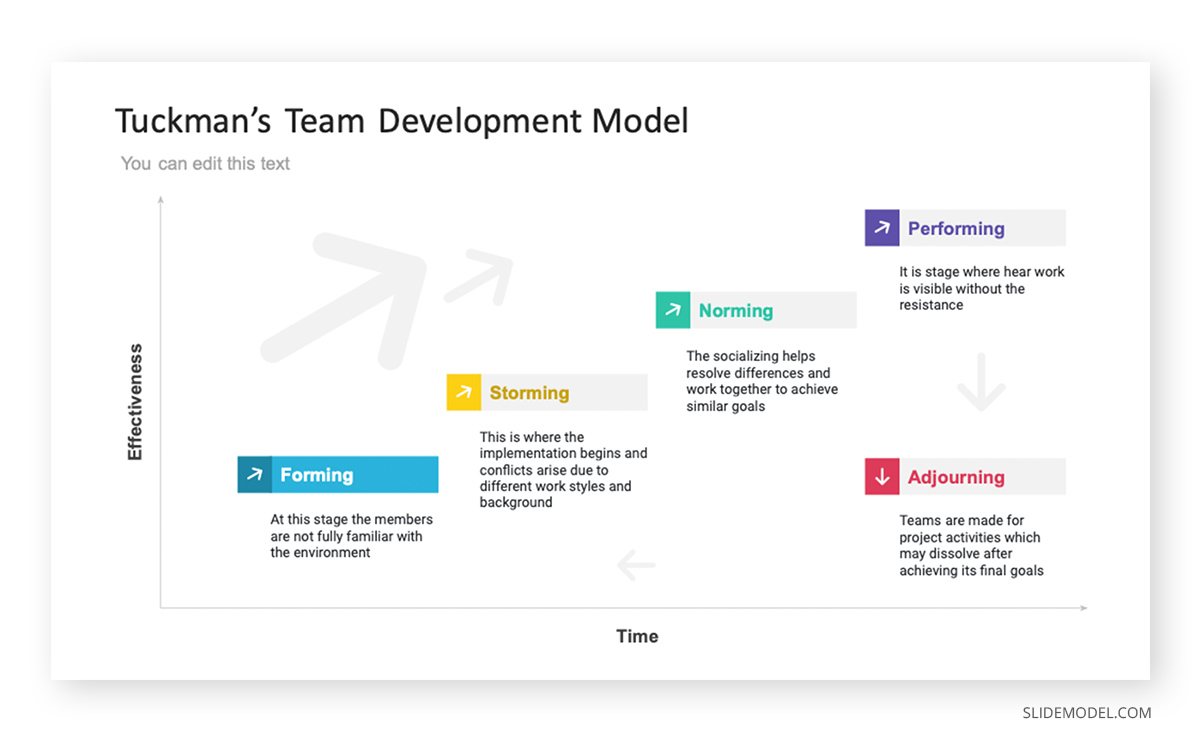
Final Tip: Help Your People Build Up Their Soft Skills
Strong interpersonal and collaboration skills are the “mortar” of a well-performing team. Sadly, a lot of us tend to overestimate our ability “to get along with others”.
A survey of recent college graduates found that ? believe they can work well in a team environment. However, only a third of managers agreed with this statement.
At the workplace, similar dynamics might be at play. Some managers may think they are “great”, while their team will silently disagree. Make sure that you can identify such trends and address them by suggesting team-building activities, holding training sessions for managers, or providing individual team members with aids and prompts that could help them improve their interpersonal skills.
